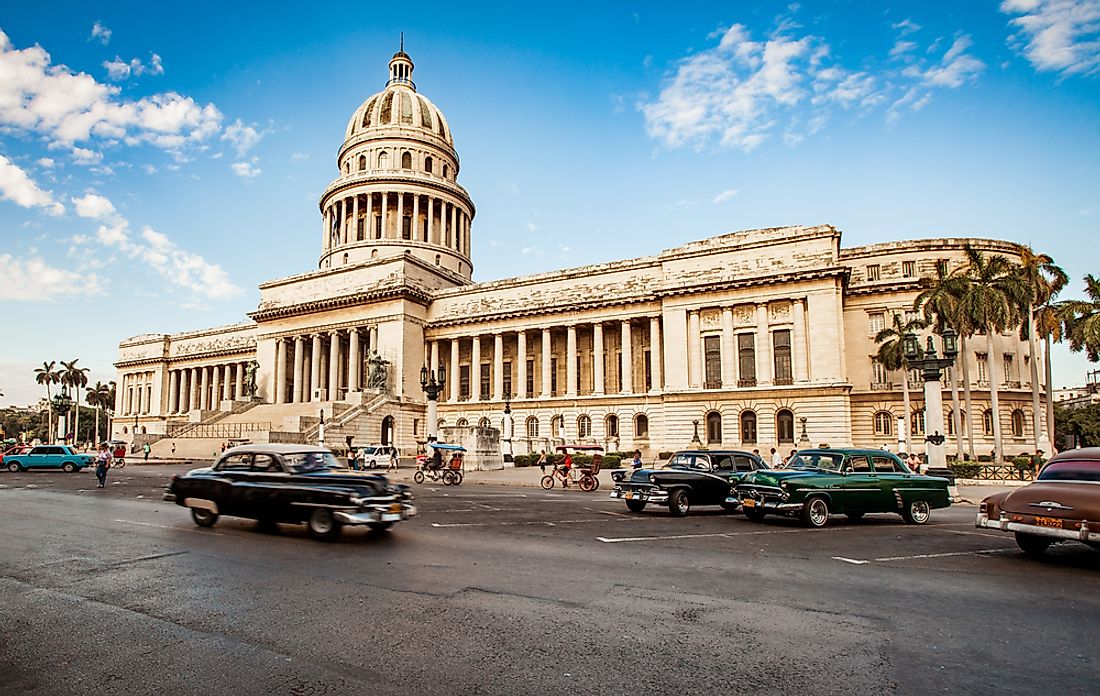What Type of Government Does Cuba Have?

Cuba has had a democratic centralist political system embodied in the “one state – one party” principle since 1959. Constitutionally, Cuba is a socialist country ruled by the dictates of Marxism. The Communist Party of Cuba is the leading force both at the society level and in the state. The government has three branches as stipulated by the Constitution of Cuba: The judiciary, executive, and legislature. Even so, the official party controls almost every sector in Cuba including the media. As such, many bodies around the world label Cuba as a Soviet democratic country. Regarding elections, only people not accused of any criminal offenses or not physically challenged are legible for voting. Cubans living abroad have no electoral right. However, suffrage is affordable for people who have lived on the island for two years.
The Executive Branch Of The Government Of Cuba
The Cuban executive branch constitutes of two bodies. The Council of Ministers, which is the Cabinet, is the highest ranked administration body in the country forming the national government. The President, First Vice President, Council of State’s seven vice presidents, Executive Committee Secretary, heads of all the national ministries and members elected by law to serve in the federal government constitute the cabinet. The Council of Ministers officiates and directs foreign policies exercised by the country. It also controls and oversees foreign trade and the national budget. It enforces laws and rules passed by the National Legislature also called the Council of State. The latter comprises of 31 members and functions in exercising legislative powers such as calling house assembly meetings. The president is the head of state and leader of the government
The Legislative Branch Of The Government Of Cuba
Cuba has a unicameral parliamentary system. The Cuban National Legislature is also known as “National Assembly of people’s Power”. It has 612 members who serve for a five-year term. These members usually hold brief sessions aimed at ratifying decisions made by the executive branch. The legislature meets twice in a year and is allowed to keep regular periods of sessions. It is held responsible for commissioning issues affecting the Cuban economy, industries, communication and transportation, constructions, public health, defense, internal trade, and foreign affairs. It has departments and bodies that oversee works done by the Commission, Local Assemblies, International Relations, Administrative, and Judicial Affairs.
The Judicial Branch Of The Government Of Cuba
The highest court in Cuba is the People’s Supreme Court. The Constitution rules the country and anyone found to compromise the court’s orders is legible to denial of any liberties stipulated by the constitution. The court rules on constitutional issues and reviews appeals made from lower courts such as criminal, civil, labor law, administrative, and economic cases.
Political Parties and Elections In Cuba
Cuba practices the one-party political system. It has non-compulsory suffrage, legible to Cuban citizens who have been in the country for two years. Such people are only afforded that privilege as long as they are 16 years of age and above and those not accused of any criminal offense. Cubans living abroad have no voting rights. The national elections are held as per the 1976 Constitution. Elections involve the nomination of vying candidates by voters in the nomination assemblies; provincial and candidacy commissions nominate federal candidates; secret-ballot voting system and recall elections. In general, elections have two phases: one which deals with elections of the municipal assembly delegates and the other handling elections of provincial and national assembly’s deputies. As a one-party system country, the Communist Party is the official political party. Other important parties include the Liberty Party of Cuba, Social Democratic Coordination of Cuba, and the Christian Democratic Party of Cuba among others. The Department of Revolutionary Orientation regulates media coverage. Mentally incapacitated people, prisoners, and those deprived of political rights cannot take part in the elections. In Cuba, political parties are not allowed to campaign. Voters can only choose candidates from their biographies and photos posted on public domains and locations.
Leadership In Cuba
Even though the country declares itself as a democratic state, the level of control exercised by the government reduces Cuba democracy to Soviet or rather revolutionary democracy. Many political institutions and human rights around the world have criticized the Cuban government whereas others have praised the political democracy of the country’s political system. Fidel Castro came to power in 1959 and ruled until his retirement in 2008. From there, his brother Raul Castro took over, and he is the Cuban President to today.











